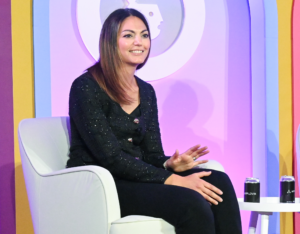Here’s today’s AdExchanger.com news round-up… Want it by email? Sign up here.
Stankey On The Warpath
CNN’s digital business will undergo a significant overhaul under AT&T, The Wall Street Journal reports. WarnerMedia CEO John Stankey, a longtime AT&T exec who has shown himself to be a disruptive force within the company’s newly acquired media holdings, is obsessed with mobile engagement to the exclusion of broadcast ratings. His new mandate is to have tens of millions of smartphone users engaged for an average of 10 minutes per day. And Stankey sees the Xandr advertising business playing a role as well. “He wants to sell the ability to target individuals with certain characteristics, the way big tech competitors such as Facebook and Google do.” More.
Brand Lyft
Lyft spent $352 million on advertising in 2018, more than double the $169 million it spent in 2016, according to its IPO filing. Market share almost doubled during that time, from 22% to 39%. “We believe that much of the growth in our rider base and the number of drivers on our platform is attributable to our paid marketing initiatives,” Lyft stated in its filing. Aside from brand-building, Lyft must spend heavily on performance marketing to acquire new drivers and riders. Among its list of warnings to investors, it cautioned that its “marketing initiatives may become increasingly expensive.” About 25% of Lyft’s advertising spend was with Alphabet’s Google, which owns more than 5% of the ride-sharing startup. Read the filing.
Kidfluencers
Despite policies forbidding kids under 13 years old from creating profiles, YouTube and Instagram have spawned a lucrative industry for “kidfluencers.” Brands like Walmart, Staples and Mattel are shelling out big endorsement deals to toddlers and children with popular accounts (generally run by their parents). A sponsored post for identical twin toddlers with more than 2 million followers on Instagram, for example, goes for upwards of $10,000, The New York Times reports. On YouTube, it could rake in up to $50,000. Kids television programs are regulated by the FCC for product placement and promotions, but online videos are not. COPPA, the FTC-backed children’s online protection law, covers data and targeting but not videos of babies on social media. “The fact that brands are using actual children as influencers is a very clear sign that they’re targeting children that they know are on these platforms,” says Josh Golin, executive director of the Campaign for a Commercial-Free Childhood. More.
But Wait, There’s More!
- A Look Inside The 2019 Ad Tech Outlook – Adweek
- CNN Is First Media Co To Use Comscore Cross-Channel Ratings – release
- Facebook Sues China-Based Companies For Creating Fake Accounts – Bloomberg
- Meet Amanda Cox, Who Brings Life To Data On Our Pages – NYT
- Dataxu Launches Advanced TV Marketplace – release
- Ford Takes Targeted, Local Approach To Ranger Comeback – Ad Age
- J2’s Vivek Shah, The CEO Quietly Presiding Over $4B Media Biz – Recode
- Quantcast To Support Google Consent Management Products – release
- What’s The Future Of The Internet – The Information
- Amazon To Launch New Grocery-Store Business – WSJ












